Revamping Medicare Meetings: A Person-Centered Approach for SNFs
By Tyler Keeter PT, DPT, MHA
Regional Director of Operations
Let’s take a moment to reconsider how Medicare meetings are typically handled in Skilled Nursing Facilities (SNFs). Traditionally, these meetings focus on managing and coordinating the clinical care of post-acute patients, but they are often conducted without the direct involvement of the client or their family. This absence may stand out to those familiar with person-centered care philosophies, such as the Eden Alternative. The question arises: What if clients and their families were integrated into these weekly meetings?
Why Include the Client and Family in Medicare Meetings?
Incorporating clients and families into clinical management discussions isn’t a novel concept. Inpatient Rehabilitation Facilities (IRFs) already include their patients in weekly care coordination meetings, and a good number of our Infinity partnered SNFs have moved to the model. From a person-centered care perspective, if they have not already, SNFs should seriously consider revamping their Medicare meetings to invite the client and their family to the table. Here’s how it could work:
During the admission process, the interdisciplinary team (IDT) invites the client and their key family members to meet once a week until the client transitions out of skilled care. This regular meeting could be referred to as Grand Rounds or Progress Rounds. During these sessions, the client, family, and IDT can collaboratively review the client’s progress, address concerns, and adjust goals in preparation for a smooth transition from the facility. This approach ensures that everyone is on the same page and that the client remains at the center of the discussion.
Aligning with the Future of Healthcare and Reimbursement
In addition to being more person-centered, Grand Rounds aligns with the future of healthcare reimbursement. The era of extended 30-day stays has come to an end throughout most of the country, and financial incentives are increasingly tied to quality—especially patient satisfaction. SNFs must ensure that re-hospitalizations are minimized even after patients leave, as they will be held accountable for up to 30 days following discharge, despite potentially only having the patient in-house for a fraction of that time.
Grand Rounds serves as a proactive, coordinated system that reduces barriers to health improvement and prepares patients for a successful transition. By involving the client and family from the start, the team can work together to ensure better outcomes, both during the stay and after discharge.
Does This Fit with Your Facility’s Culture?
If this concept resonates with your community, here are ten key takeaways from SNFs that have successfully transitioned to this more inclusive approach:
- Get Buy-In from the IDT: Start by clearly communicating the rationale behind the change to your team. Keeping the reasons front and center will help overcome resistance during the transition.
- Trial Period: Instead of demanding immediate change, suggest a trial period. People are more likely to embrace a new system when they know it’s a trial, and it often becomes a part of their routine once they experience its benefits.
- Room-to-Room vs. Centralized Meetings: You can choose between having the team visit patients in their rooms or bringing them together in a central location. Both methods can work effectively, depending on your community’s setup.
- Clear Communication with Clients and Families: Make sure clients and their families understand the purpose and structure of Grand Rounds. This can be communicated through informational packets and reiterated during team introductions. The goal is for everyone to understand that this is the time for direct interaction with the IDT.
- Time Management: It’s important to set expectations about the time allocated for each discussion. A reasonable timeframe is around 10 minutes per client once the process is running smoothly.
- Family Time Flexibility: Be considerate of family members’ time. To accommodate everyone, group meetings can be scheduled in blocks, e.g., 9-10am for one set of clients and 10-11am for another.
- DOR Leadership: Typically, the Director of Rehabilitation (DOR) leads the Grand Rounds. This person needs to guide the discussion, ensuring each team member and family member has a chance to contribute while staying on task. By doing this, the DOR will become even more integral to the success of the SNF’s operations.
- One-on-One Conferences: For more complicated or sensitive situations, don’t hesitate to schedule separate family conferences outside of Grand Rounds. While Grand Rounds works for most cases, there may be instances where additional discussion is required.
- Efficient Use of Time: Allow the IDT to complete relevant documentation during or between meetings. This includes care planning, nursing notes, and writing orders. The time spent in Grand Rounds can be billable for therapy services as long as there is appropriate documentation of skilled discussions, education, and problem-solving.
- Team Briefings: Consider holding a brief meeting before Grand Rounds to quickly review any notable situations. This ensures that the IDT is aligned and prepared for the discussions ahead.
Looking Ahead
SNF Administrators and Directors of Rehabilitation may recognize the need to overhaul their patient management systems to better align with person-centered care. Those who embrace the Grand Rounds model will see improved patient and family engagement, while those who maintain the status quo could struggle to provide high-quality care in an environment with shorter stays and greater accountability.
If you’re unsure whether this change is right for your community, put yourself in the patient’s shoes. What kind of system would you prefer if you were the one receiving care?







